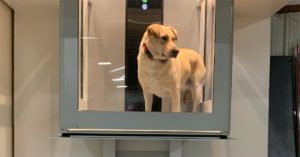Home modifications for seniors: The Plan for Aging in Place
The Potential pitfalls of Home Modifications
As with any renovation project, the secret to success is in the planning. However, there’s no way you could possibly plan for everything, and there are bound to be issues along the way. The time-tested solution is to set a goal and keep your focus trained on it, even if you encounter some speed bumps along the way. Often overlooked, the planning process can be as complex as the work itself, but just as you might hire construction workers and installers, professionals with experience in accessibility and the Age in Place sector are available to weigh in on options and help streamline the planning process to ensure the results meet residents’ every need.
Home modifications: the professionals you’ll need
Designers and contractors who have executed successful projects and vendors with countless flawless installations under their belts are therefore a vital part of any home modification project. Then there’s the involvement of a healthcare team, which should certainly be seriously considered depending on needs. Employing an Occupational Therapist with experience in home modifications can also provide invaluable expertise in cases of medical diagnosis thanks to their ability to identify any potential hazards that the user and family may face in the future, and the design elements to be incorporated to avoid these issues.

Home modifications: the main areas of a house targeted
The major components of a home modification project that will allow seniors to age in place safely and comfortably are generally the bathroom and eliminating or accommodating the stairs. However, while a new bathroom design is a personal endeavour that can take on a life of its own, solving the problem caused by stairs comes down to choosing the solution that fits both resident needs and house specifications, with stairlifts often seen as the best option. However, in practice, that may not always be the case.
Lonnie McInnis details the Potential pitfalls of Home Modifications
Having spent many years running his business in the home modifications sector, Lonnie McInnis provides his invaluable expertise to multiple clients, so he’s pretty much seen it all, putting him in the excellent position of being able to warn of potential missteps, which he highlights “can be amplified when health and safety of the client are involved”. Here are the main ones he warns against:
The main problems encountered with stairlift installations
Stairlifts are one of those items that, until you get one, you’re unlikely to have thought about the key considerations, and especially the things that could go wrong if they’re not fitted correctly. Here are the main issues Lonnie’s seen over his many years in the industry:
1. Insufficient space
Whether to transfer from a wheelchair to the stairlift, for caregivers to help users in and out of the chair or for users to position themselves on the stairlift themselves, the space around a stairlift should be a primary consideration when considering installing one. Awkward angles and having to back onto a chair at the top of the stairs, especially if users have a balance, strength or pain-related disability, could render a stairlift unusable, taking users back to square one where their stairs are a significant barrier in their homes.
2. Rails that are either too long or too short
Though stairlifts are supposedly designed to fit your stairs, sometimes a range of factors means the rail they glide along becomes more of a problem than a help. When too long, for example, rails may block wheelchair transfers and even access to doors, corridors and around the house, especially for those with reduced mobility. When too short, however, (often in a bid to reduce costs), a rail may stop part-way up the stairs, most often at a turn, which means users are expected to get out of the chair halfway up their staircase and climb the last several stairs to the top, again, making their stairs less safe than they were in the first place.
3. Maximum weight limits
When bariatric people are sold a standard stair glide, they once again face more of a safety hazard than a solution.
“And how about the dementia client who would forget to get off the lift?” Lonnie concludes.
The main blunders made when modifying washrooms
When it comes to washrooms, there’s just so much that can go wrong, but especially when designing for accessibility and ease of use, some things should just take centre stage (which isn’t always the case!) Here are some of the most memorable bathroom disasters Lorrie has had to deal with:
- Water on the floor, water in the basement, water in neighbor's apartment. Burning water, freezing water.
- A toilet installed on the shower ramp.
- A toilet that’s too high, low or small (not elongated)
- Pedestals installed for decorative purposes, but that block accessibility.
- Grab bars installed into tile only with no backing, or even suction cup style grab bars installed, which are very unsafe as they are likely to fall off the wall when any pressure is applied, therefore not serving their purpose.
After seeing all these mishaps, Lonnie has the following advice: “The bottom line is that your contractor needs to know how the provided equipment will interface with your needs; without that knowledge there could be costly and dangerous consequences”.
An alternative solution to the problem of stairs: a home elevator
A stairlift may not always be the right option to get residents access back to their entire homes. Depending on space constraints and user needs, a residential elevator may be a much more usable solution, ensuring safety from every angle well into the future.
However, those looking for a mobility solution to help remove the barrier that is their stairs won’t know all their choices until they talk them through with an expert. A professional from Cambridge Elevating can make a full assessment of your needs to ascertain which lift solution best meets your needs, making them an invaluable member of your design team.







